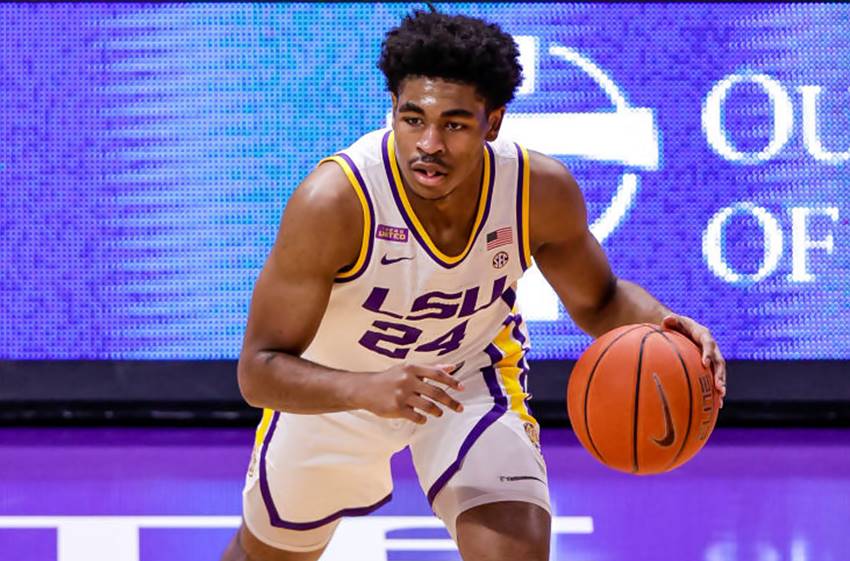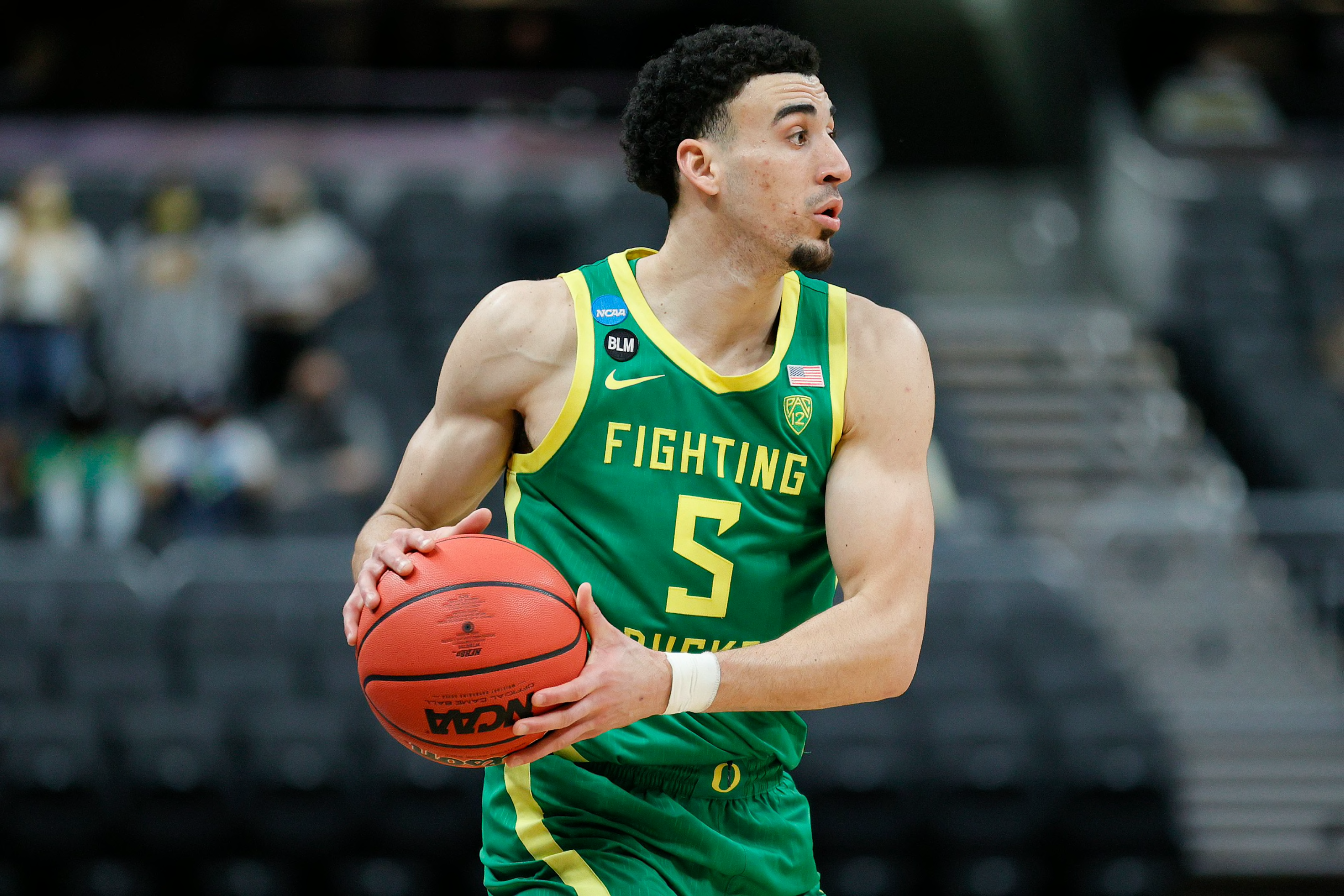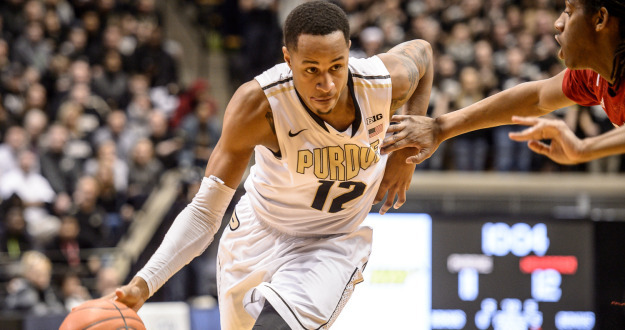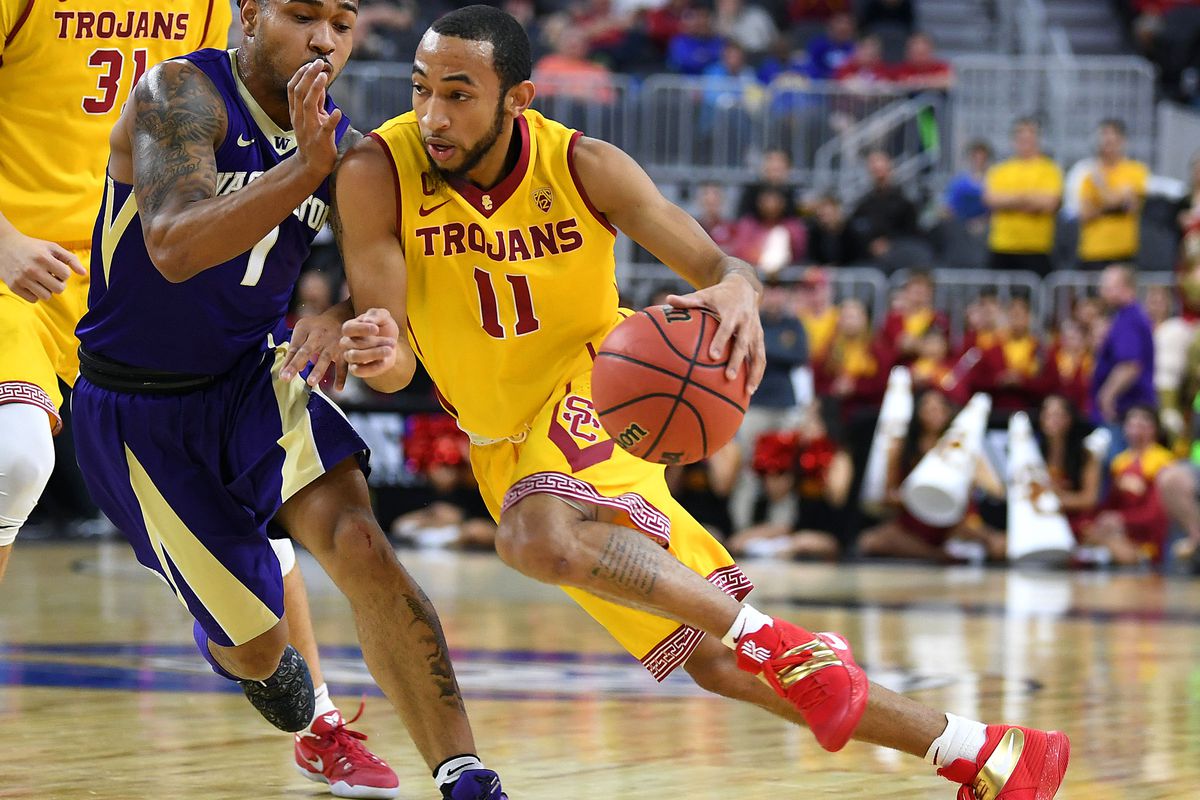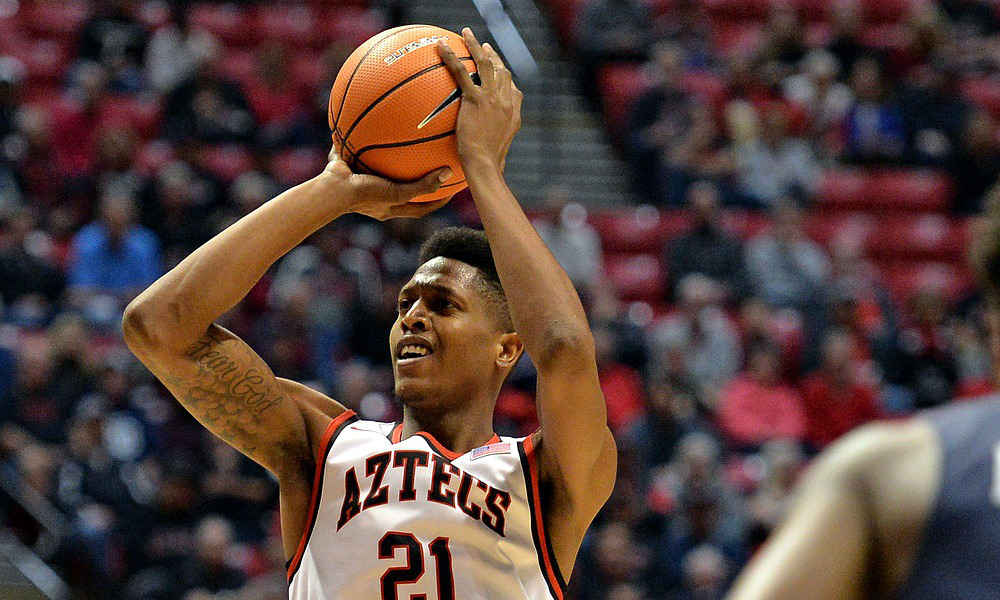1. Orlando: Paolo Banchero A+
Hard to love this pick more. I had Paolo as the best player available, the best fit, and they completely tricked Woj and the rest of the NBA media into believing they wanted Jabari.
Jabari would have been a fine choice, but it would have left the team lacking a primary creator. Franz showed surprising creation potential as a rookie, but still may be more of a #2 guy with elite role player skills.
Paolo has clear #1 creation upside, and does not come attached to a small size and huntability which is neat because it can enable Orlando to build a super switchable defense with one or no guards while still having a potent offense.
If they develop well, Paolo and Franz are a championship level top 2 with Jalen Suggs, Wendell Carter Jr., and hopefully Jonathan Isaac if he can ever get and stay healthy as some nice pieces to fill in the gaps.
After a decade mired in mediocrity, the future finally looks bright for the Magic.
2. Oklahoma City: Chet Holmgren C-
Chet can work out totally fine here, he is an elite role player who fits well alongside Shai and Giddey. But they passed up Jabari Smith who was a more elite role player and fit just as well, which is a dubious decision by Sam Presti.
Jabari has potential to be somewhat blah and Chet can be great in his own funky way so it would be unfair to skewer Oklahoma City too hard, but this does not seem like the correct choice.
3. Houston: Jabari Smith: A+
Draft grades are hard. Are you supposed to grade picks based on the skillfulness of the pick or how much bottom line value he provides to the slot?
Smith is not a difficult pick to make, I would imagine that most or all of the 30 teams would have taken him here. But he is great value for #3 overall as I rated him as an average #1 overall, so regardless of the difficulty of the pick this was a big W for the Rockets.
4. Sacramento: Keegan Murray C-
It’s somewhat unfair to skewer the Kings here. I personally had Murray 12th on my board, and would not have considered him this high. But it is a relatively flat tier and an incredibly difficult slot to choose in, and there was pretty much nobody who was a big win on the table.
In some regard you could blame the Davion Mitchell pick for being a low upside guard alongside De’Aaron Fox and eliminating the next three SG picks from fitting in Sacramento’s young core. But even without Mitchell I would not like the Ivey/Fox backcourt since it offers two small guys to hunt while still being light on shooting.
Personally I would have taken Dyson Daniels or Jeremy Sochan ahead of Murray, but regardless the Kings were choosing from a tier of boring role players and going to get an underwhelming result. This was a no win slot for them so not much to be done.
5. Detroit: Jaden Ivey B
I am fairly bearish on Ivey, but it is difficult to knock him as the choice here. I rated Mathurin, Daniels, and Sochan as all a bit higher, but those were all somewhat hot takes and none of them trump Ivey by a comfortable margin.
Ivey fits especially well with Cade Cunningham, as they make a pretty good backcourt duo helping atone for each other’s weaknesses.
Ivey needs another handler by his side because he is not a floor general, but having a small guard like De’Aaron Fox is tough because then there are two small guys to hunt. In that regard, Cade is a great fit.
Cade needs another handler by his side because his creation is fairly inefficient, and if he had lower responsibility and can spend more time spotting up to maximize his shooting ability his overall efficiency should get a boost.
I don’t really like Ivey that much and am not convinced he amounts to anything in the longterm, but the same could be said for anybody available at this slot. Perfectly reasonable pick here.
6. Indiana Pacers: Bennedict Mathurin B
Between Mathurin, Duarte, Hield, Brogdon, and Haliburton the Pacers really love SG’s a bit too much.
But Duarte is a bench player and Brogdon + Hield are at the end of their primes, so this is all about finding a sidekick for Haliburton. Him and Mathurin can be a fun backcourt duo that provide great shooting and efficiency and hopefully do not give too much back away on defense.
Personally I would have taken Dyson Daniels or Jeremy Sochan but this pick is perfectly fine.
7. Portland: Shaedon Sharpe D
Portland took the bait on the mystery box. They need to hope he is better than free tickets to a crappy comedy club.
8. New Orleans: Dyson Daniels A
Daniels was the best player available on my board and fits nicely with the Pelicans. Jaxson Hayes is not the right 5th wheel for their lineup, they needed somebody more perimetery and Daniels is the perfect replacement.
Now even without Zion they can put out a lineup of CJ/Daniels/Ingram/Herb/JV which is actually pretty good. And if Zion can stay healthy and effective that is an awesome top 6. Either way this is a good pick.
9. San Antonio: Jeremy Sochan A
Sochan was my best player on the board. Good pick for the Spurs and good landing spot for Sochan
10. Washington: Johnny Davis D-
The Wizards cannot get enough of low upside guys in the late lottery. In the past 4 years here are their top choices:
2019: Rui Hachimura #9
2020: Deni Avdija #9
2021: Corey Kispert #15
And now Johnny Davis this year. 6’5 SG who has no PG skill, struggles to get to the rim, struggles to make 3’s, but has a nice midrange pullup and that midwestern toughness.
These guys are all mediocrities with low upside. The Wizards are quickly becoming one of my least favorite drafting teams.
11. Oklahoma City Ousmane Dieng F-
Man did Presti fumble the bag this draft. Taking Chet over Smith was a mistake but they nevertheless got a good prospect that could work out. But here they really add insult to injury by diving into their bag of picks and setting 3 of them on fire.
Let us revisit Sam Presti’s international picks since hitting on Serge Ibaka in 2008:
His only other first round choice is Aleksej Pokusevski who he traded up for at #17 overall in 2020. Poku is still only 20 and has some potential to stick around for an NBA career, but the early returns are underwhelming and NYC and Minnesota who traded down for Immanuel Quickley and Jaden McDaniels respectively seem to have gotten the better end of the deal.
Other than that he has taken 5 pulls in round 2 that all completely flopped: Tibor Pleiss (#31), Alex Abrines (#32), Theo Maledon (#34), Vit Krejci (#37), and Petr Cornelie (#53). It’s tough to hit on 2nd rounders but that is four pulls early in the round who look nothing close to NBA players, and Maledon came one slot before Xavier Tillman who an actually sharp Memphis team drafted after Presti’s blunder.
And then last year, Alperen Sengun falls into his lap at #16 and he trades out of the slot for additional future picks. Sengun still has longterm questions to answer, but has already shown far more potential than Poku and all of the 2nd round picks combined.
Now this year he takes the two picks acquired from trading Sengun and throws in a 3rd lottery protected Denver first rounder to trade for Dieng, who is painfully obviously a weaker prospect than Sengun.
I get that OKC had way too many future picks and needed to consolidate on somebody, but it really should have been anybody but this guy.
OKC is putting far too much faith in their terrible international scouting with this pick, and it will likely result in 3 picks spent on a guy who is not an NBA player.
Conversely, this was a great trade for the Knicks to scoop up so many first rounders for such a weak #11 pick.
12. Oklahoma City: Jalen Williams D
After making two blunders to start the draft, Presti figured why not have a 3rd and reached for a random 21 year old mid-major guy who had a junior year breakout.
The last mid-major prospect that Presti took lottery was Cam Payne, and while he has settled into a nice backup player for his fourth team in Phoenix, he had a disastrous start to his career and OKC sold low on him in a trade halfway through his second season.
Why should Williams provide any better of a return? He had a nice combine but taking him all the way up in the lottery seems like a big overreaction. Mid majors are historically not a source of NBA talent, and Williams seems like he could be an exception in the sense that he may be a decent rotation player. But he simply does not have the upside or the median to be worth a lottery pull.
13. Detroit: Jalen Duren A
Detroit had a great week of trading, shipping Jerami Grant for a Milwaukee 1st and three 2nds, and then re-routing that first for Duren and Kemba Walker $9M expiring contract.
People were laughing at the Pistons for an underwhelming return on Grant after rumors of getting #7 overall, but then they ended up swinging the return into a prospect who is better than the guy Portland actually took at #7.
Which is not to mention that Grant should have a limited trade value as a solid but not great player on an expiring deal who will likely need to be overpaid as a free agent to retain from ages 29+.
Meanwhile the Knicks pulled off some sneaky good work as the middle man here. They paid Denver’s lottery protected first round pick for next year (likely in the 20s) and three 2nd rounders for Milwaukee’s 2025 top 4 protected pick and a dump of Walkers $9M cap hit.
The picks all look like approximately mid-2nd rounders, two in 2023 and one in 2024. Seems like a reasonable price to unload Walker’s expiring, and then that Milwaukee pick is better than the Denver pick since it is only top 4 protection instead of top 14, and the 2022-2023 Nuggets are faves to be better than the 2024-25 Bucks.
As for Charlotte, flipping this year’s #13 into next years #25ish pick and three seconds is not thrilling, but it is fine since this year’s #13 is a relatively weak slot and they need to save cap space to pay Miles Bridges.
14. Cleveland: Ochai Agbaji D
Defensive versatility and switching defenses is all the rage in the NBA right now, but the Cavs can not remotely be bothered to care.
To add to their core of 2 bigs and one small PG, the Cavs picked a SG and still have zero long term wings on the roster. Even if you like Okoro, he is SG size.
They have pretty much have nobody to match up defensively with stars like Jayson Tatum, Jimmy Butler, Luka Doncic, etc. This would have been a nice time to take a stab on somebody who has a chance of doing so such as Tari Eason or Jake LaRavia, but instead they needed to take an old low upside SG and how need to pray that his shooting is actually good.
15. Charlotte: Mark Williams A-
Williams is a nice value, a great fit with LaMelo as a lob finisher, and may be an instant upgrade over Mason Plumlee at center.
This pick made sense in all levels for Charlottes.
16. Atlanta: AJ Griffin B
Griffin is fine here, but likely slid a bit due to medical flags so hopefully he can stay healthy and hopefully his shooting is real.
17. Houston: Tari Eason A
Eason is a gamble to be sure as his foul and turnover rates are disgusting for a relatively old prospect. But his physical tools and defensive potential are off the chart, and he has far more exciting upside than anybody else on the board.
Another clear great selection for Houston
18. Chicago: Dalen Terry B-
I like Terry, and I championed him as a value pick when he was not projected to be drafted. But it seems that NBA teams may have fell a bit too hard in love here, as he is a somewhat boring role player and I am not sure he is quite worth #18 overall.
But he a fun guy with a relatively easy path to usefulness at the wing, so it is difficult to criticize this pick too harshly.
19. Memphis: Jake LaRavia A-
LaRavia is a nice pick who seemed like a Memphis guy all along, so this is a nice choice for them.
The only downside is that 22 and 29 is a steep price to pay to move up 3 slots, but I suppose they have so much young talent they don’t mind consolidating some assets a bit.
20. San Antonio: Malaki Branham C+
I don’t know. I didn’t strongly watch Malaki film but he seems like a boring SG whose defense is more bad than his offense is good. He is a guy where if his freshman shooting percentages overstate his shooting, he could be really disappointing for his drafting team.
21. Denver: Christian Braun B
Braun is a little bit boring in the upside department, but the Nuggets already have their star power and just need cheap useful guys to eat minutes and they are a real contender.
Braun could be their version of Pat Connaughton who is simply less bad than Austin Rivers, and not bad and not expensive is all the Nuggets need around Jokic and a healthy Murray.
22. Minnesota: Walker Kessler A
Not sure how Kessler fits with KAT but he is a nice value choice here.
23. Memphis: David Roddy B–
Trading 24 year old Melton for a late first is a disappointing outcome when he is still locked up for two more cheap years, but it seems that he wanted out of Memphis and they obliged him by sending him to Philly who is starved for depth and needs a guy like him more badly than the Grizzlies. This trade is a clear win for Philly, but it is tough to win with a player who wants out that will only be fully appreciated by other analytics teams.
As for the pick. I don’t know. Roddy is a tough one for me. He is highly intelligent and fairly well rounded on the court, but just seems a buck short of having much NBA upside in terms of dimensions, skill, and athleticism.
But there is no strong reason why he cannot be a useful pick in the late first, so I don’t have anything too bad to say about the pick. It is mostly unfortunate that he had to cost them Melton
24. Milwaukee Bucks: Marjon Beauchamp C
Beauchamp is a reasonable choice here for his defensive versatility, but he is fairly old with badly limited offense and an unorthodox path to the NBA. He may be fine but this pick is just meh to me.
25. San Antonio: Blake Wesley C
Wesley is young with a bit of potential but is also really meh.
26. Minnesota: Wendell Moore B+
Moore is a bit boring but he nevertheless seems like a solid role player and solid value here.
27. Miami Heat: Nikola Jovic C
Jovic is a boring international but is probably fine to take this late.
28. Golden State: Patrick Baldwin Jr. D-
Baldwin was absolutely terrible for an awful low major team as a freshman, he struggled with injuries, and he is horribly unathletic, and the most likely conclusion is that the guy is not an NBA player.
But of course the Warriors take him in round 1 to prove that they are light years ahead.
29. Houston: TyTy Washington B+
TyTy is a bit boring but a pretty solid gamble this late.
Gotta LOVE Houston’s draft. They got a big prize in the lottery and two quality pulls in the late first. They are on a roll drafting between these 3 picks and Sengun.
That said I think people are going a bit too far praising Rafael Stone for being some drafting savant. Smith completely fell into his lap and Jalen Green over Evan Mobley and Scottie Barnes is still a historical mistake so let’s not pretend that didn’t happen.
The Rockets future is looking bright but I think people get too excited to praise teams for making a few nice picks when everybody makes some major blunders over a large enough sample.
30. Denver: Peyton Watson A-
Pre-draft I wasn’t sure where to rate Watson because his offense is so bad and his defense is so good.
I stashed him #34 after watching zero film and putting close to zero analytical effort into him. Why? Because as fun as draft analysis is, it is merely a hobby and it takes significant energy to thoroughly analyze every second round talent. This is why big boards are a brutal exercise to try to precisely rank EVERYBODY.
My main hang up with him is that it was difficult to think of anybody who was that bad offensively and worked out in the NBA…but then I remembered Herb Jones was a disaster offensively his first two years of college.
Granted, Watson likely does not make the shooting and overall offensive leaps that Herb did. But if he does he is a really nice payoff for the last pick in round 1 as an excellent role playing wing.
This is the pick the Nuggets got along with two 2nd rounders from OKC in exchange for their top 5 protected 2027 1st and OKC absorbing $8M JaMychal Green expiring to save on luxury tax.
OKC gets some upside with mid-late lotto potential, but not that much upside with top 5 protection. Denver benefits from getting cheap pulls on talent to help their team that can help them win it all in the short term future. In terms of pick quality it is close to break even, given that this fits their window better and they shed luxury tax it was a really good trade for the Nuggets, and Watson caps it off with a solid pick.
31. Indiana: Andrew Nembhard C+
Kinda boring but it’s fine
32. Orlando: Caleb Houstan C+
Also kinda boring but fine. If he does work out he would make an interesting 5th wheel for a lineup like Suggs/Franz/Houstan/Paolo/WCJ.
33. Toronto: Christian Koloko A
This is a really awesome pick for Toronto for a team that whose only rim protector is 29 year old free agent Chris Boucher.
Koloko is super switchable and super good on defense, and gives the Raptors a vertical spacer.
Between Barnes, Siakam, Anunoby, Precious, and Koloko, Toronto is really hoarding some elite defensive pieces to build around.
34. Oklahoma City: Jaylin Williams B
Williams is a bit boring but he has decent odds of being a useful rotation player.
35. LA Lakers: Max Christie D-
Christie is terrible and so are the Lakers, so at least it is a good fit.
36. Detroit: Gabriele Procida C+
Procida is a generic role playing international SG, but if you want to draft a stash he is fine.
37. Dallas: Jaden Hardy C-
Small chance of Anfernee Simons 2.0, big chance of bust.
38. Memphis: Kennedy Chandler A-
Chandler is the type of prospect that is always difficult for me to pin down. He is small and athletic and does some really nice things, but how excited can you be for a 6’0 guard who shot 60.6% FT? I seriously don’t know.
Gotta be worried that he is this year’s version of Jawun Evans or Sharife Cooper as the little guy who everybody loves and slides and then is not good value. But little guys are weird– when they bust they bust really hard, but sometimes they hit harder than you would think.
Overall I’m going to say this the Grizzlies made a nice gamble here.
39. Cleveland: Khalifa Diop C-
I don’t really know much about Khalifa Diop. I just know that there was a decent 6’7 guy on the board in EJ Liddell that the Cavs could have drafted, but of course that is against their religion so they take a random international big. Maybe they just wanted a stash, I don’t know. I just wish they would let Mobley have a single wing by his side when some teams are trotting out 4-5 wing lineups.
40. Minnesota: Bryce McGowens C-
Seems like guys like this hit in round 2 pretty much ~never
41. New Orleans: EJ Liddell A–
Liddell is really weird and I am not certain what to think of him but it is tough to see how he is not a good pull this late.
42. New York: Trevor Keels A+
Man it is INSANE Keels slid this long and so many turds went ahead of him. This includes Dieng who the Knicks swindled 3 future picks from OKC for.
Keels is my most underrated player on my board. He is not an athlete but he is young and knows how to hoop, which is a much better pick to make that an international like Dieng who is not an athlete but is young and has no idea how to hoop.
43. LA Clippers: Moussa Diabate D+
Don’t see it with this guy
44. Golden State Warriors: Ryan Rollins A-
Fun round 2 pull
45. Minnesota: Josh Minott B+
Not a bad pull here.
46. Denver: Ismael Kamagate B
I had said that Kamagate was undraftable based on a look at the stats…but he is a late starter and very toolsy and making rapid gains. And he was DPOY in his French league. So maybe I sold him short. Still think he is kinda boring but he is a reasonable stash candidate in round 2.
47. Memphis Grizzlies: Vince Williams B
Vince seems kinda boring to me but everybody loves him and it’s the Grizzlies so it’s probably fine.
48. Indiana Pacers: Kendall Brown B
I love me some Kendall Brown but I have a feeling he slid due to insurmountable red flags rather than a misevaluation of his talent.
49. Cleveland Cavaliers: Isaiah Mobley A
As much as I would like to criticize the Cavs for once again not taking a wing, I like this pick. You want to keep Evan as happy as possible, and Isaiah may be a decent value this late in the draft as high basketball IQ runs in the family. He certainly has more potential than Thanasis Antetokounmpo.
50. Minnesota Timberwolves: Matteo Spagnolo B
A fine choice to stash
Rest of the picks are do not care:
Winners
The big winners of the draft are Orlando and Houston who got the two possible franchise changing talents on the board. Houston taking some good pulls later in the first on Eason and TyTy are a nice bonus.
The Knicks did not get to make any franchise changing moves, but Keels could be the steal of the draft in round 2 and they really swindled Presti badly in the Dieng trade. They scooped some nice chunks of expected value tonight.
New Orleans had a sneaky good night with Daniels + Liddell, as did Minnesota with Kessler, Moore, and Minott. Toronto did very well with Koloko as their only pick at 33.
Denver also had a solid draft. They got some nice pulls at wing between Braun and Watson with Braun being more likely to be useful right away and Watson being a higher upside gamble long term. Their trade with OKC to acquire Watson is better than it is getting credit for. Kamagate is a decent round 2 stash, as he could match up with Victor Wembanyama next season and pump up his trade value if he plays well against him.
Spurs got off to a good start with Sochan but then took a couple of meh SG’s in round 2 in Branham and Wesley. But they nailed the important pick and it wouldn’t be a surprise to see one of the SG’s hit, so overall their draft was net good.
As for Detroit I am not in love with Ivey like everybody else, but he is a fine choice and being able to convert an expiring Jerami Grant into a pull on Jalen Duren is a nice maneuver. Good night overall.
Philly needs to be happy they plucked a DeAnthony Melton from thin air.
Memphis needs to be sad they had to deal Melton, but LaRavia, Roddy, and KC are some decent pulls collectively so it was an alright night for the Grizzlies all things considered.
Losers
OKC
The biggest loser was OKC. They were a team with such an exciting hand to play with their war chest of future picks, infinite cap space, and Giddey + Shai. But they took the wrong guy at #2 in Chet, they used three of their future picks to take a pull on a terrible french guy Dieng, and they took a dubious mid-major talent at #12 in Jalen Williams.
They are still in not bad spot with Giddey, Shai, Chet, and likely another high lottery pick next year and still a whole lot more picks to take bad shots with. But they could have instead had a core of Giddey/Shai/Jabari/Duren with 3 extra first rounders to use on pretty much anybody else other than Ousmane Dieng.
Portland
Portland would be an incredibly frustrating team to root for now. Dame is going to be 32 coming off by far the worst season of his career and is due $137M over the next 3 years. He should rebound next year, but he likely is past his prime and they have too little help around him to have much potential. Maybe they can sneak into the playoffs next year, but it is difficult to see them winning a series.
They really should be unloading Dame while he still has trade value. For instance, if the Knicks are willing to offer Keels, Grimes, all of the picks from Dieng trade, and a future NYK unprotected 1st, that is a snap yes. And even if the Knicks are not THAT generous with draft picks, it will still be worth doing simply because Dame’s prime is over and they need to reset.
I would have also taken Dyson Daniels or Jeremy Sochan over Shaedon Sharpe, and traded for Jalen Duren instead of Jerami Grant. That gives us Keels/Grimes/Sochan/Duren with a slew of extra future 1sts in the bag.
Now instead the Blazers get to try to build around Dame, Josh Hart, and Jerami Grant. We will see what they can do, but most of the time they are likely destined for the play in tournament, and there is some small risk that Dame has another bad year and goes from being a coveted star to an albatross contract. And then Grant will be a 29 UDFA that will be risky to pay longterm, and the team is left with essentially nothing of value after missing the playoffs.
They still have an entire offseason to field a competitive cast around Dame. But they are choosing the path of most resistance when instead they could have just cashed in on Dame, scooped a bunch of neat young guys, and gone into tank mode.
Sacramento
Kings didn’t blow the pick as bad as everybody thinks they did, simply because the pick wasn’t good enough to have much at stake. Taking Murray over Ivey could look like the right pick in retrospect and still be an underwhelming outcome for #4 overall.
Everything went downhill for them from that Davion Mitchell pick. If I was their meddlesome owner, I would have forced the GM to draft Sengun at #9 and keep Haliburton. Then this year we would have traded down for whatever nominal fee we could collect to draft Dyson Daniels or Jeremy Sochan. Fox/Hali/Daniels/Sengun would be something to build on. Fox/Mitchell/Keegan/Sabonis? Not so much.
Others
Wizards continuing their tradition of wasting lottery picks on mediocre low upside guys continuing cannot bode well for the franchise.
Dallas only had a couple of low leverage plays, but there are a number of players I would have taken a pull on at #26 over an expiring Christian Wood– such as Moore, TyTy, Watson, Keels, and Koloko. At #37 Hardy is a fine pull but likely doesn’t amount to anything. Meh night for them.
Cavs got meh value with their picks and didn’t pick a single capable wing.
Warriors made a really bad PBJ pick but somewhat redeemed it with Rollins.

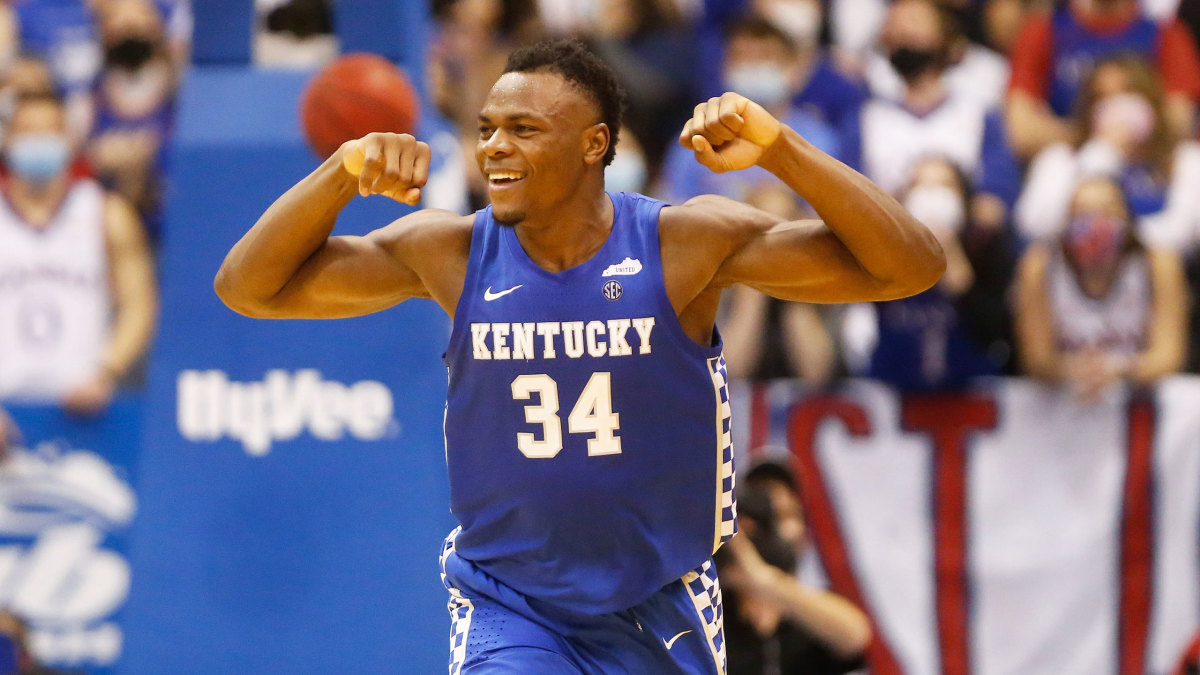


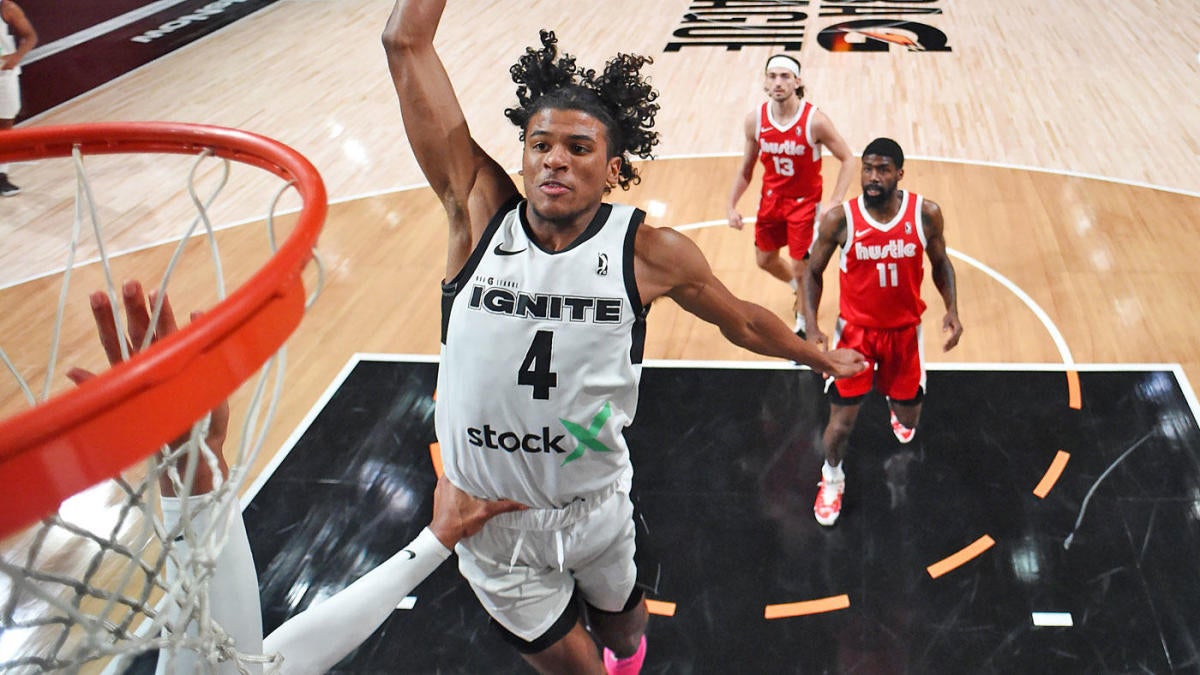

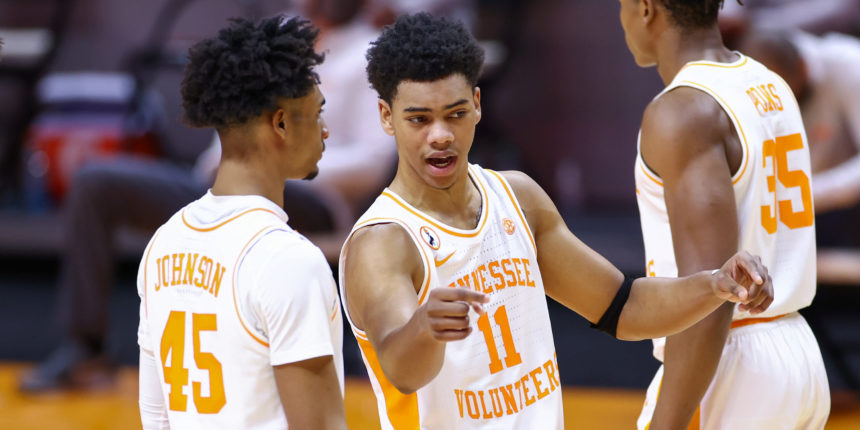

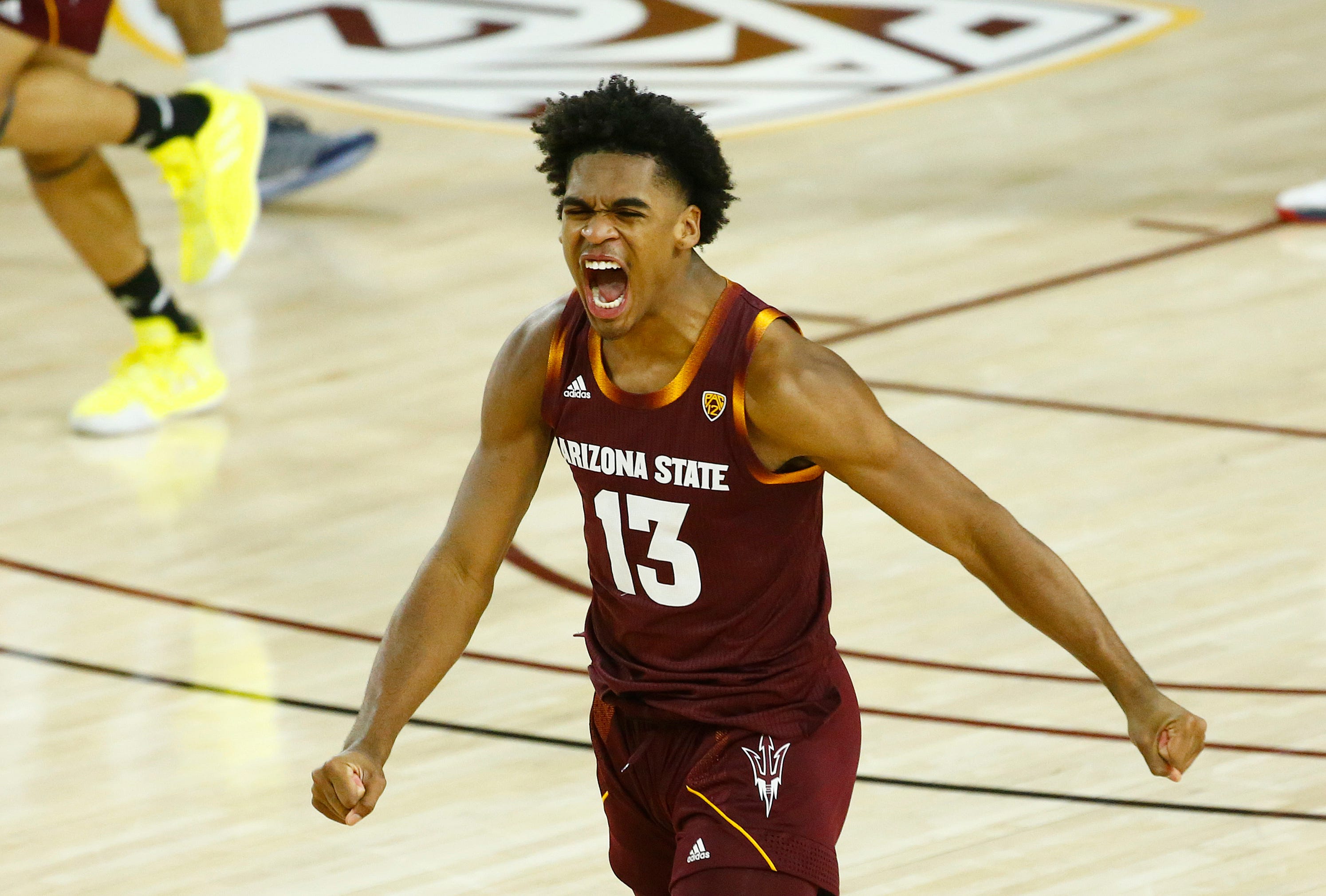
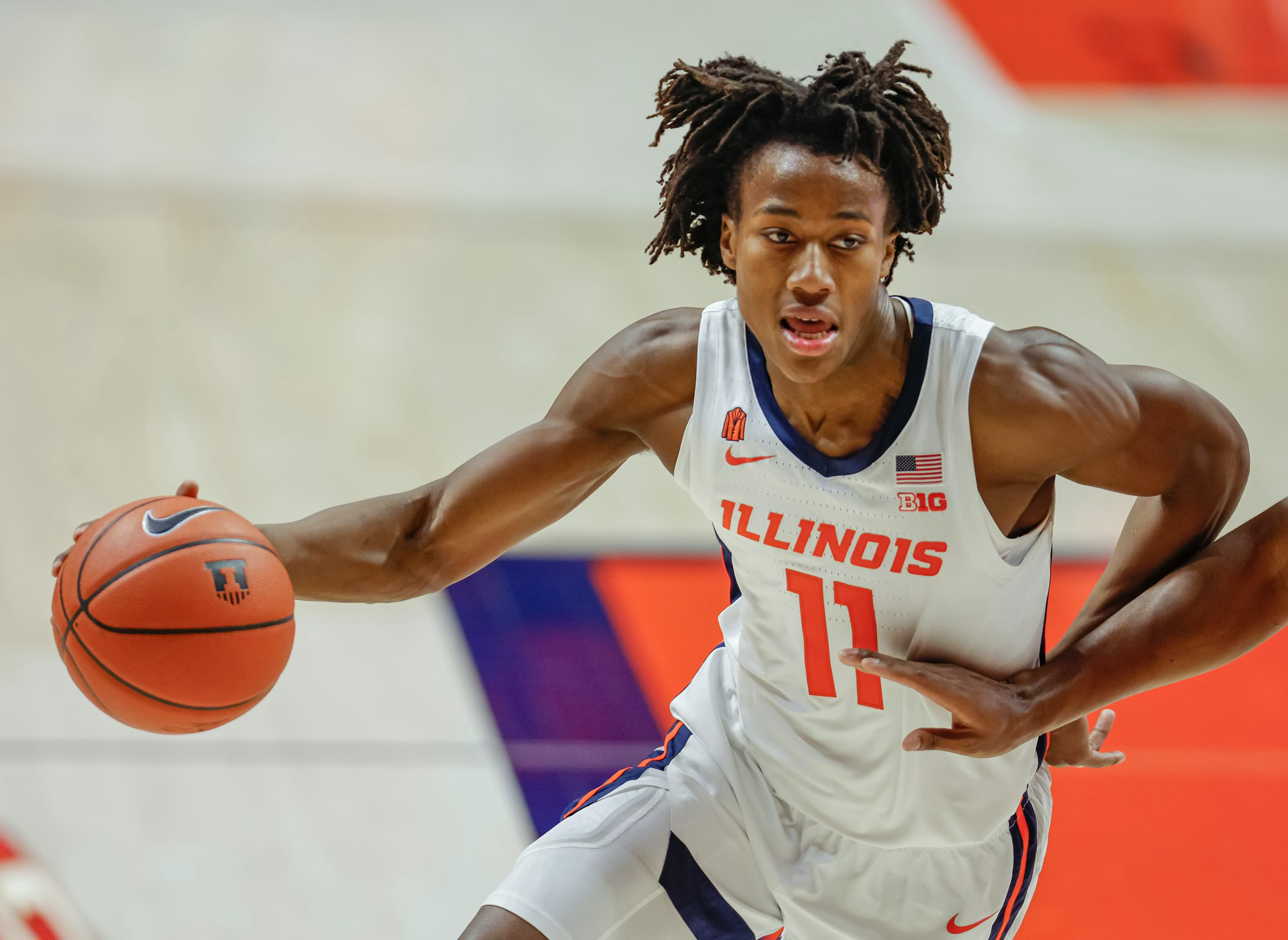
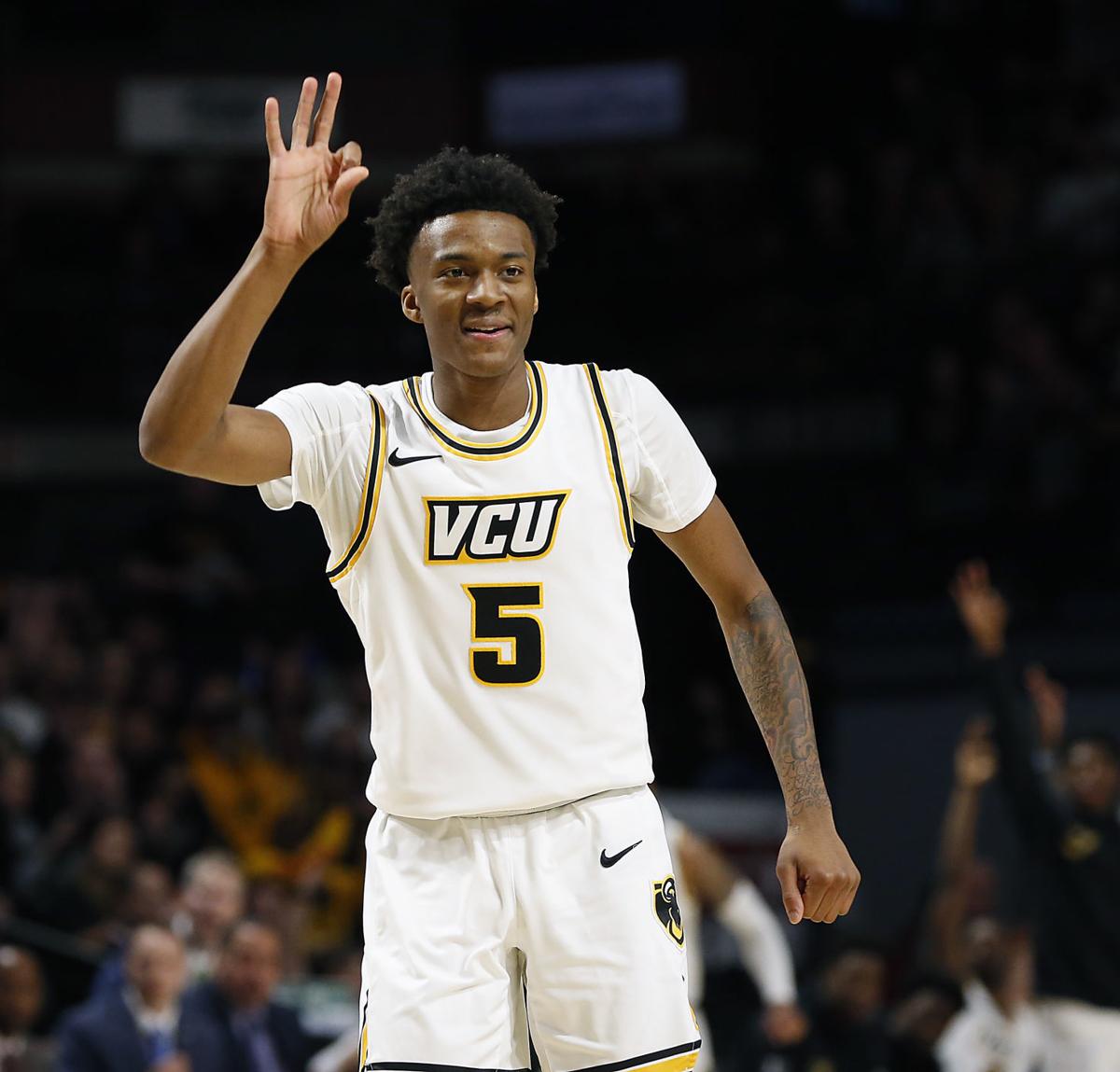
/cdn.vox-cdn.com/uploads/chorus_asset/file/22443552/usa_today_15727952.jpg)
